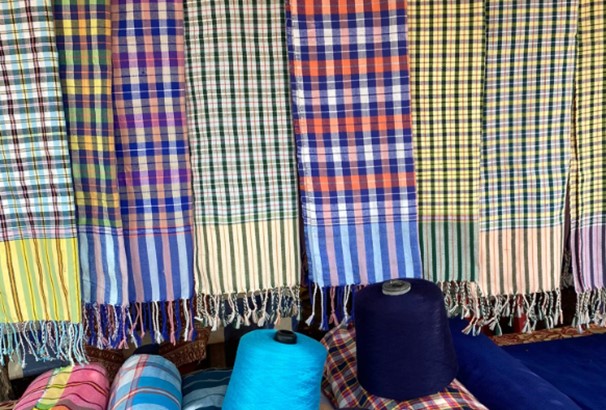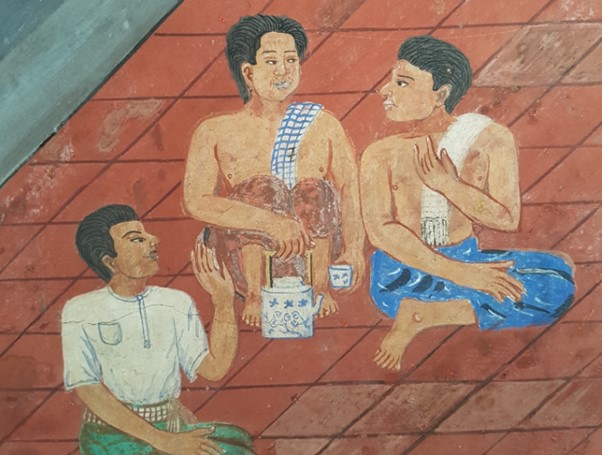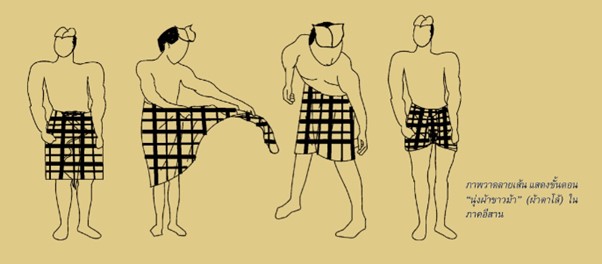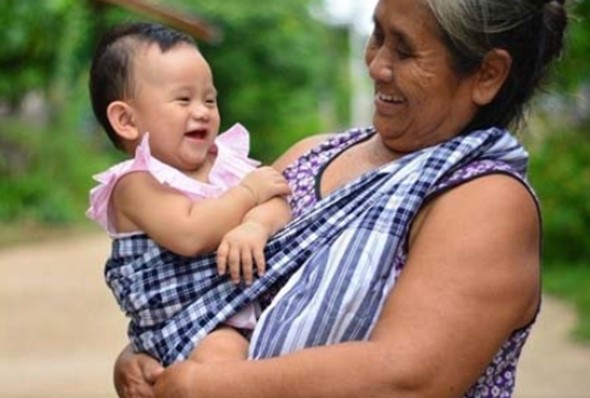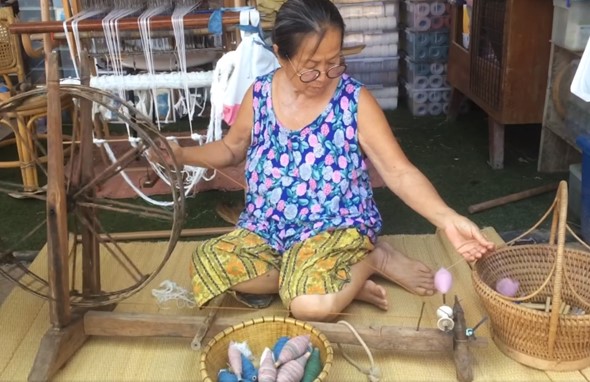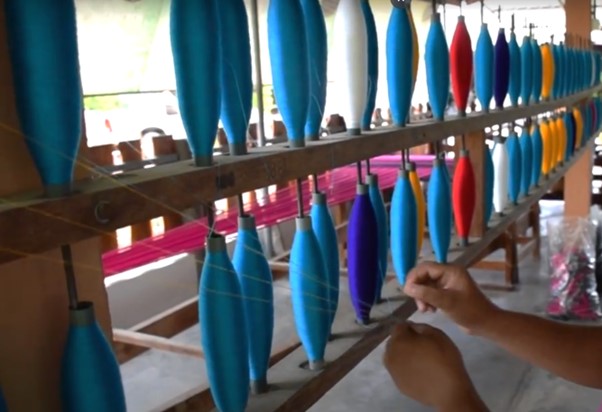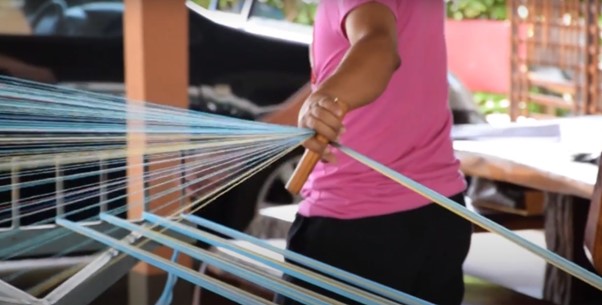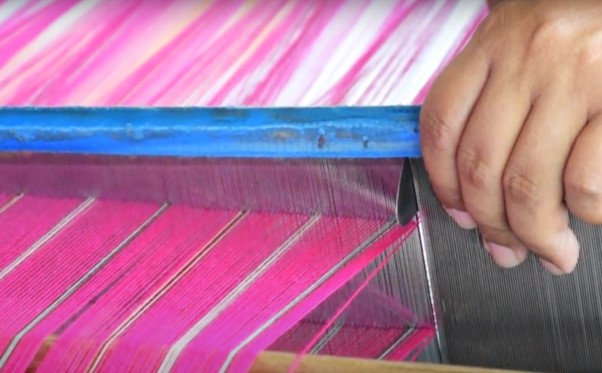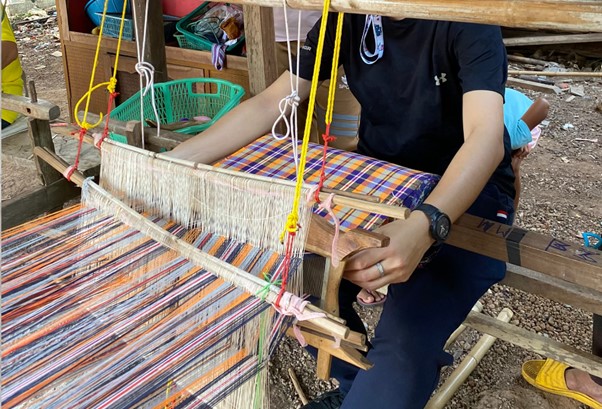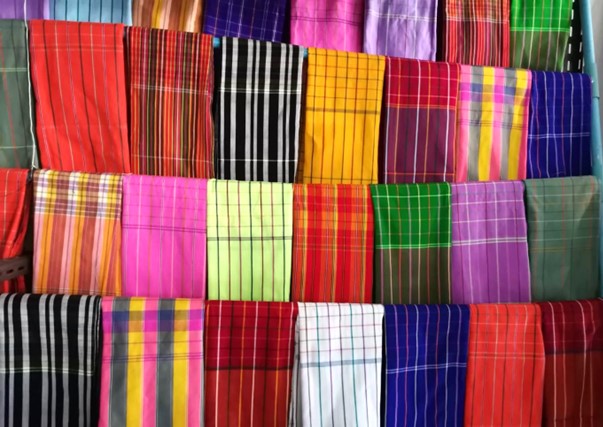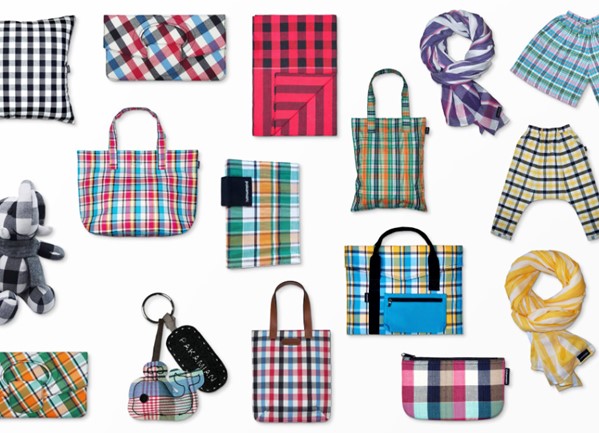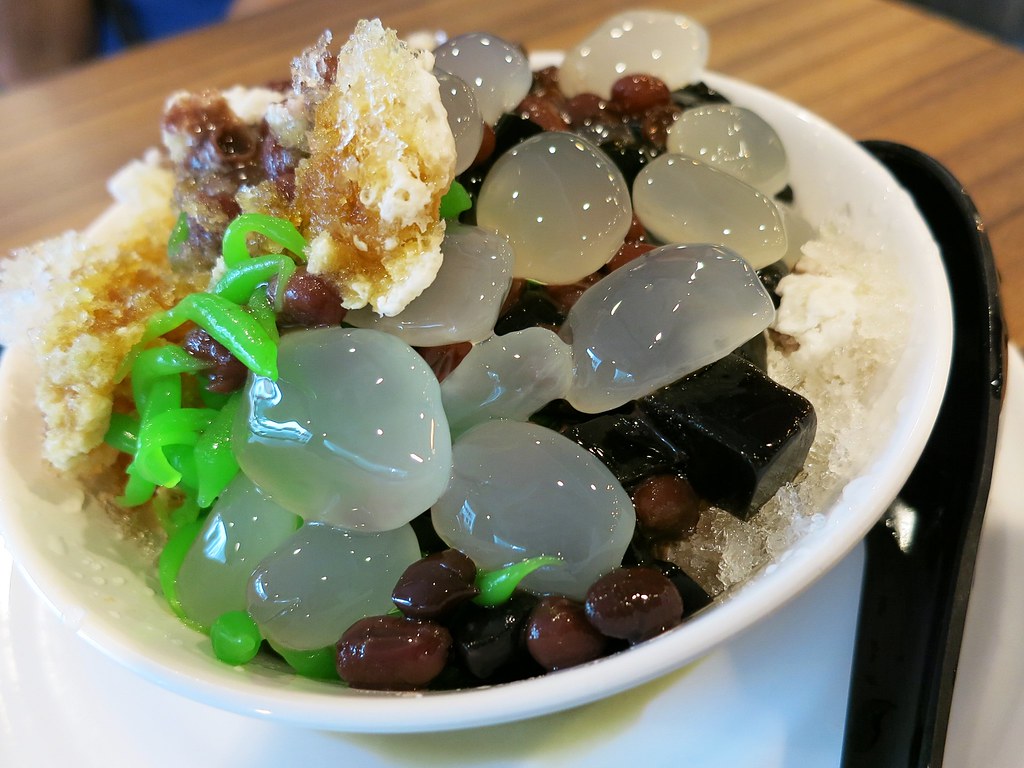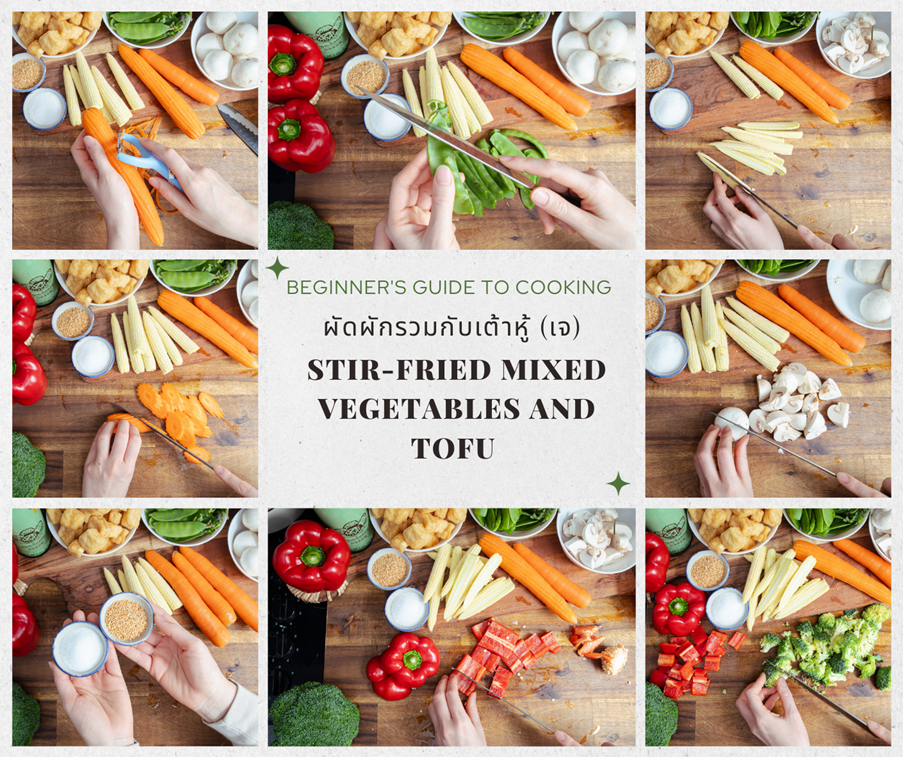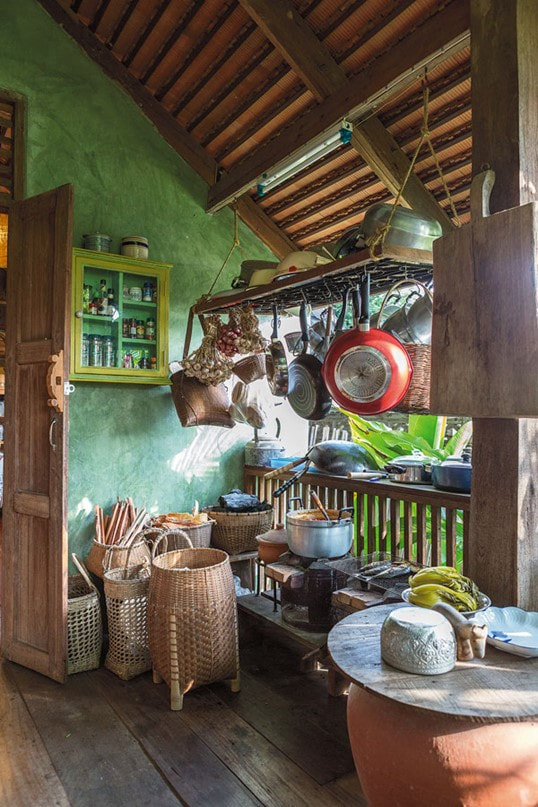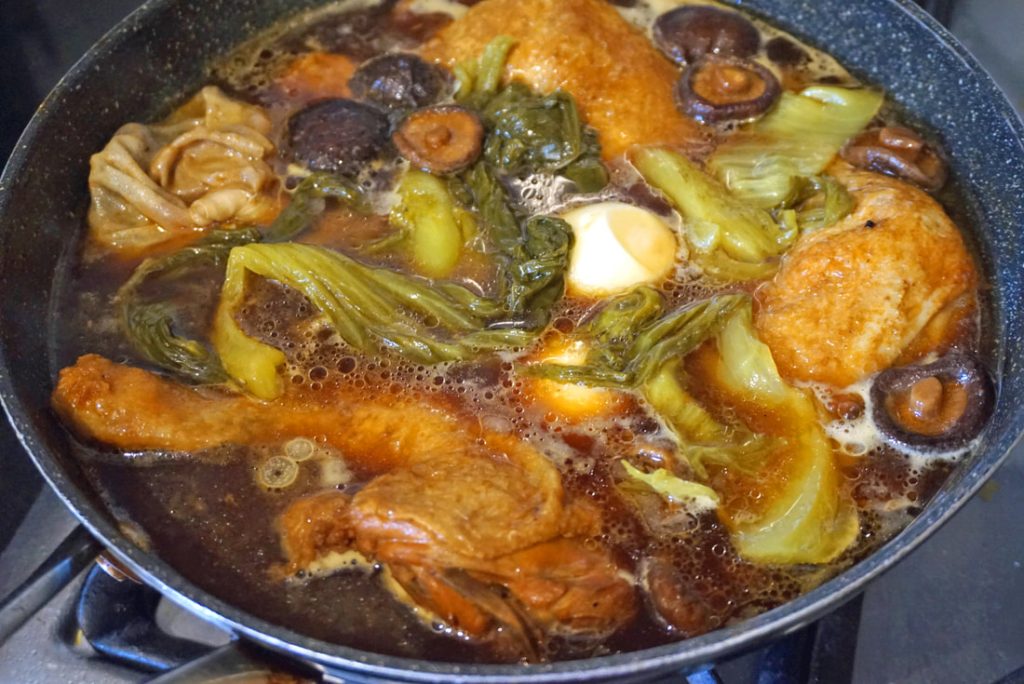Is it a towel, a blanket, a baby sling, a clothing item or a bag? What if I tell you that ‘pha khao ma’ is all of them and more, would you believe me? Last year my family stopped by Bang Saen Beach after paying respect to our ancestors at their graves in Chonburi. None of us adults had swimmers prepared but my brother unhesitatingly joined our niece and nephew in the water with the shorts he came in. “Mai pen rai” (no worries) he says, later pulling out a pha khao ma from his bag and using it as a towel, then tying it up into a pair of shorts!
A variety of pha khao ma colours and patterns (Image source | Kasetsart University)
Pha khao ma is a woven rectangular fabric, colourful and in gridded patterns – chequered, plaid, stripes. Usually made with dyed cotton and sometimes silk for special occasions, or raw yarn and hemp threads in certain areas. They come in all sizes but commonly around 2 sok wide and 3-4 sok long. Sok literally translates to elbow and is an old Thai measuring system, 1 sok equals 50cm. This may seem like any ordinary fabric, so how did it become such an integral part of Thai culture?
Pha khao ma has been part of life for many people all over Thailand for over a millennia – although its origins stem from a different culture, Thai people have used and adapted it over the years. It is said that during the Chiang Saen era (mid 10th to mid 11th century) in Northern Thailand, Tai Yai or the Shan people were observed wearing lightweight cloths around their heads for sun protection. Seeing how versatile they are, Thai men started wearing them around their waist, using them to store weapons, as towels and bedding during long journeys.
A painting at The Emerald Buddha Temple in Bangkok. Two men with pha khao ma on their shoulders and another man with pha khao ma on his waist (Image source | Iudexvivorum)
An illustration of how to wrap pha khao ma into pants in Isaan (Image source | Isaan Textiles)
Since then, the popularity and the uses of pha kao ma grew. By the Ayutthaya period (late 13th and 14th centuries), many paintings depict men commonly with one of these over their shoulders, around their waist or wrapped into a jong kraben (wrapped pants). Later, during the Rattanakosin Kingdom in the 18th century, pha kao ma became an everyday household item. Babies were swung in hammocks tied with them, people bathed in them outdoors, wore them to religious ceremonies, used old ones as cleaning rags, carried stuff in them, and the list goes on. This one piece of cloth is so versatile that it was involved in so many aspects of daily life, perhaps this is why it became the fabric of Thai culture. Fun fact – Thailand is trying to get pha khao ma registered as an ‘intangible cultural heritage of humanity’ with UNESCO!
A baby sling made with pha khao ma (Image source | Naew Na)
How it’s made
- Dyed thread is wound onto a weaving spool (pictured in pink on the right) using a wheel. This ensures the thread is not tangled and sitting nicely.
(Image source | Jutatip4U)
- These spools are then placed on a spool rack and the threads are picked in a particular order depending on the desired pattern.
(Image source | dew2dev)
- With the help of a cylindrical bamboo tool, the bundle of threads are wound onto a frame to determine the width of the fabric. The artisan walks back and forth looping the thread over the prongs on each end of the frame.
(Image source | dew2dev)
- This step requires 2 people – one person taking the threads from the previous steps, hooking it onto a tool and passing it through a fine tooth weaving comb to the other person. This gets passed back and forth until every thread has been passed through (which could be over a 1000 times!). Once complete, the threads are combed to ensure the pattern is sitting nicely and everything gets wound up onto a big roll.
(Image source | dew2dev)
- The big roll of thread is then transferred to the weaving loom and white thread is woven through perpendicularly to set up the weaving process. The weaver is in control of the horizontal threads, choosing the colours and how they are woven through to create various patterns. Using both their hands and feet, they control the many parts of the wooden loom squeezing the threads tightly together to create pha khao ma.
As with food, each region of Thailand has a unique style for their pha khao ma. For example, the Central regions are known for their big chequered patterns with 2 colours, Isaan for their small detailed grids, and Kanchanaburi for their ‘100-colour’ pha khao ma.
(Image source | Kasetsart University)
Pha khao ma roi si (100-colour pha khao ma) (Image source | phakoawmarroisi)
Today in the big city of Bangkok you don’t really see people walking around with pha khao ma tied around their waists anymore, but the fabric is still very much part of the culture. Transforming into fashionable clothing, bags, cushions, soft toys, you name it – people are still keeping this humble fabric alive as it adapts again in this new era.
How pha khao ma have been adapted in modern forms (Image source | phakamian)
Did you know?
When translated, the word pha khao ma means white horse fabric which doesn’t make a lot of sense! It is said that the word ‘khao ma’ was based on the sound of a Persian word ‘kamarband’ which describes a waist band. The English word cummerbund also has origins from this word.
Article by Oun V.


